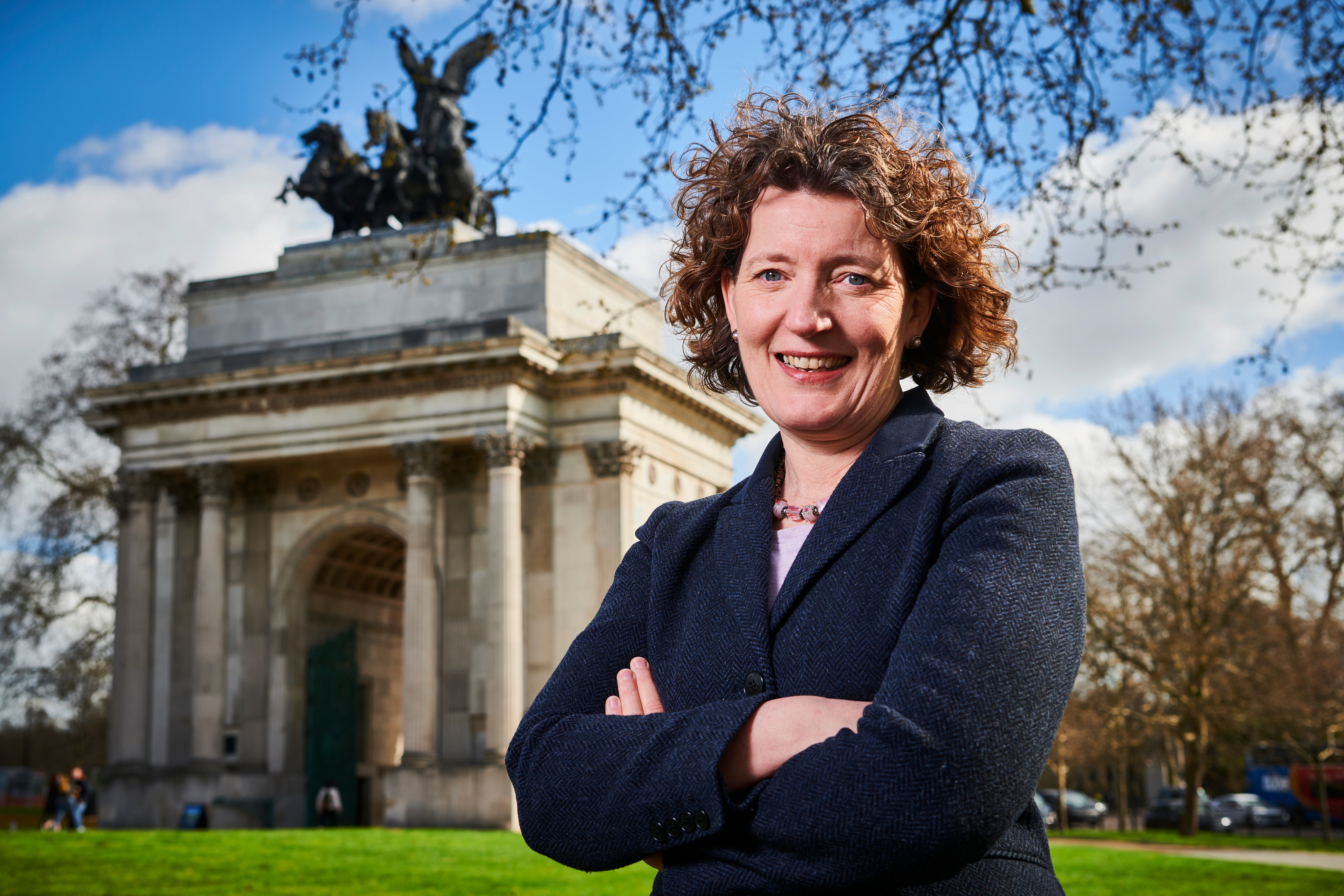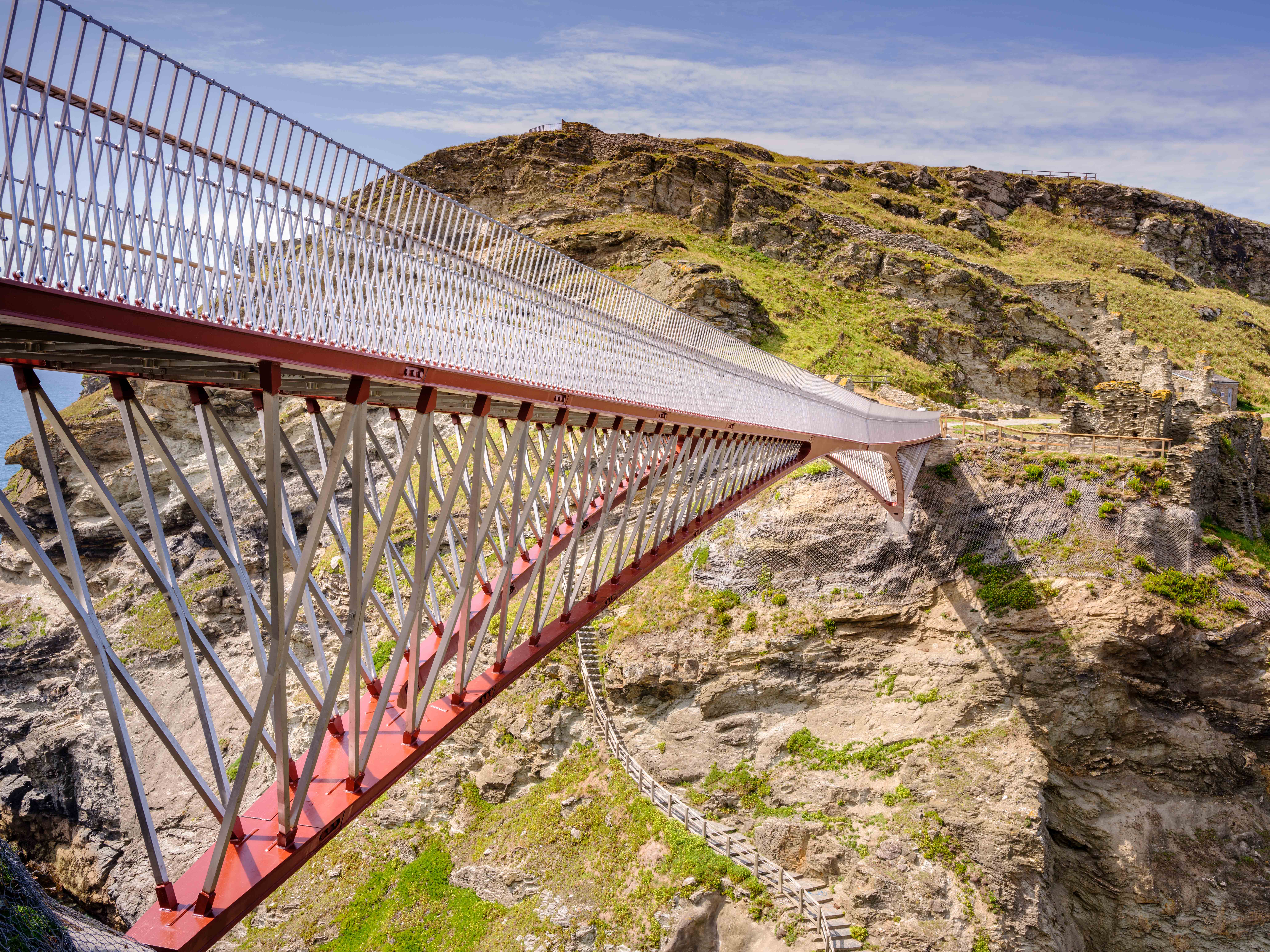The woman in charge of 6,000 years of history at English Heritage
Under her leadership, English Heritage has increased its membership to more than a million, and welcomes more than 10 million visitors a year to its sites. As Heather Martin discovers, Kate Mavor has some stories to tell


Kate Mavor CBE has a way with words. Bookish by nature and a linguist by training, she has always loved a good story. Now, as CEO of English Heritage, overseeing 6,000 years of English history and more than 400 historic sites – ranging from neolithic long barrows, through Stonehenge, to York’s Cold War bunker – she herself is a great storyteller.
Mavor joined English Heritage in 2015 from the National Trust in Scotland (“the second-best job in the world”). The organisation was preparing to split off from a rebranded Historic England (which advises the government on listings) and “make its own luck” as a charity rather than a government department, and Mavor was brought in “to make it work”. Since then, membership has increased by a third to more than a million, while volunteers have grown from a handful to over 4,000. There are now around 300,000 (mostly free) educational visits a year, and annual visitor numbers exceed 10 million.
English Heritage spends around £20m a year on conservation, and Mavor has to be able to spin a good yarn to raise that kind of money. Transitional funding from a government grant will end in April. Now, membership generates a third of annual revenue, the National Lottery Heritage Fund supports large-scale projects, and other major donors include the Garfield Weston, Wolfson, and Michael Bishop Foundations as well as benefactors such as the Rausings, who in the biggest donation to date gave £2.5m towards construction of the new Tintagel Bridge, which was shortlisted in 2021 for the prestigious RIBA Stirling Prize.
The rest comes from visitor spending. “Whatever funders are keen on, we’ve got an example,” Mavor says, secure in the quality of her collection. Although English Heritage was one of the first heritage organisations to reopen after the first lockdown in 2020, Mavor calculates that it will take at least three years to recover from the loss of inbound tourism. But the pandemic brought enhanced visitor numbers to smaller sites, as local people sought respite in the seclusion of ancient monuments, while “tourist magnet” destinations attracted a new and different audience among people holidaying at home.
If stopping things falling down was the limit of her remit, Mavor says, “it would all be rather pointless, because the next generation would just think, ‘Oh, there’s a pile of ruins, why is anyone bothering with it?’ Whereas if you infuse a site with historical significance and inspire people with amazing stories, then they want to keep it going, because that’s the place where Harold fell at the Battle of Hastings, or that’s where the Romans staked out the north of England.”
Mavor is passionate about bringing history to life for as many people as possible, involving communities who may not previously have engaged with historic sites. She wants visitors and volunteers alike to feel ownership of their heritage, and invested in communicating its worth.
Deep history tells you that England has always been a diverse place. It’s profoundly moving to contemplate how many different nationalities there were on Hadrian’s Wall, built 1,900 years ago
“England’s story is a diverse story, of immigration, trade, and invasion.” Mavor describes how the lottery fund is helping to restore Marble Hill in Twickenham, the 18th-century home of Henrietta Howard, Countess of Suffolk, and how the restoration of this Georgian villa on the banks of the Thames tells the story of a woman, disabled by deafness and abused by her husband, who overcame adversity to correspond with Jonathan Swift and hold literary salons graced by Alexander Pope.
“If you’d gone there five years ago, you’d have seen simply ‘George II’s mistress, Henrietta, had this house’, because the King counted and she didn’t.” Howard built the house in a fiery act of self-reinvention after being ditched for the King’s next paramour. “It shows how we’re digging down and telling a woman’s story from a woman’s perspective, at a time when women didn’t have much agency.”
In 2020, English Heritage embarked on a project called Painting Our Past, commissioning six artists from minority ethnic backgrounds to paint portraits of six historic figures from the African diaspora, whose overlooked stories are associated with specific sites. Among them were Roman emperor Septimius Severus (AD 145-211), born in what is now Libya, who was responsible for major building works along Hadrian’s Wall; and James Chappell, a servant at Kirby Hall in Northamptonshire, whose life, including a heroic rescue of the Hatton family from a freak explosion on Guernsey in 1672, has been pieced together from personal records.
There was Dido Elizabeth Belle (made famous by the 2013 film Belle), the illegitimate daughter of a former slave and a Royal Navy officer, who was raised at Kenwood House on London’s Hampstead Heath – the home of her great uncle, Lord Chief Justice William Murray, 1st Earl of Mansfield, who was tasked with monitoring the legality of the slave trade and is on record as having denounced it as “odious”.
And there was Private Arthur William David Roberts, born in Bristol and brought up in Glasgow, whose diary and memoirs provide a rare first-hand account of one of the few Black British men to serve in the trenches on the Western Front, in his case with the King’s Own Scottish Borderers, based in the 18th-century Berwick Barracks.

“Deep history tells you that England has always been a diverse place. It’s profoundly moving to contemplate how many different nationalities there were on Hadrian’s Wall, built 1900 years ago. Real, authenticated historical research throws up fascinating and accessible stories.”
English Heritage partnered with CBBC during the pandemic to bring history to children at home. The GCSE curriculum features Kenilworth Castle, one of seven sites in the last two years to have earned Sandford Heritage Awards for excellence in education. “If you want a sample of English society, where better to find it than in a primary school? If you can get the whole of year 5 to find out how diverse the English story is, that’s when you get people to feel associated with their country, wherever their parents or grandparents come from.”
Engaging with the outside world is what English Heritage is all about. “There’s a fantastic hinterland to Kenilworth, a very densely populated part of the country, with huge potential for exciting interest.”
Kate was born in London and grew up in Glasgow. She went straight from reading French and German at Oxford to a position as graduate trainee with Thompson Books, thence to Unwin Hyman, Macmillan and Kogan Page. She worked her way up to marketing manager, having completed a postgraduate diploma at the Polytechnic of Central London (now the University of Westminster), “because I needed to have a proper skill”, but in those days all the creativity resided with editorial: “They would dump the book on my desk and say, ‘Sell that to WH Smith.’”
Mavor prefers to see marketing as a virtuous circle of communication, in which you take the product and ask the customer: Do you like it? And if not, why not? What would you like changed – colour, shape, price, size? “You take that intelligence and you make the product different and better.” Unlike the staff and volunteers at English Heritage, Mavor didn’t feel ownership.
She wasn’t invested. “It sounds very Pollyanna to say the world can always get better if you listen and improve, but you don’t get profit, or funds to do good work, if you don’t please the funder. It’s exciting to dial up the revenue.”

Languages remained her “guiding light”. She moved into the language school business, as marketing director for the Regent Schools of English, where she had much more to get her teeth into. Then, spotting how British companies were keen to get into central Europe as countries began to emerge from behind the Iron Curtain, she and a Polish colleague set up their own market research business called Anglo-Polish Interchange, where she handled commissions from people wanting to know how many petrol stations there were in Poland, and who had air conditioning, and her partner’s staff scurried around after the answers. Starting her own business was “a massive learning curve”.
After Mavor had her first child, she went back into employment, working for Language Line, a language interpretation charity set up by Lord Young, founder of the Open University and co-author of the Labour manifesto in 1945: “a great guy”. It worked like this: a woman (for example) would walk into St Thomas’ Hospital with her sick husband, but couldn’t explain what was wrong with him because she didn’t have the English; so “the nurse would ring us up and we’d put someone straight on the line and the problem would be instantly resolved”.
Eventually, Kate completed a management buyout of the charity to go commercial with it, took over as CEO, and having to exit for the venture capitalists, led a secondary management buyout to get new funding, then grew it all over again. “It grew immensely, serving hospitals, police forces and border agencies, and because I’d invested a small amount of money in it I was able to exit and move back to Scotland for ten years.” She wanted her children to have some experience outside of London.
I told Mavor how Tintagel Castle had left a lasting impression on me as a young teenager from Australia, and she told me how, in the Middle Ages, the residents would walk from one side to the other using a narrow land bridge as high as the clifftops. But the crossing disappeared in a landslide, leaving the castle divided by a natural chasm, and in 2015 English Heritage launched an international competition to find the best architect to build a new bridge, which was completed in 2019.
“It was a bold thing to do, that I don’t think we could ever have done had we not been an independent charity. For the first time, you could walk through the castle with the narrow entrance, which is what ‘Tintagel’ means, just as they would have done 500 years ago.”
“Everyone’s got their memory,” Mavor muses. Hers was another bridge, the Iron Bridge in Shropshire, which she discovered aged eleven on a road trip from Glasgow to East Sussex to visit her grandparents. “It was the first bridge to be cast in iron, by people who’d only ever built wooden bridges, so they used carpenters’ methods, and the different bits of metal are all shaped like bits of wood would have been.”
Mavor has served a long apprenticeship for her current role. But that she should end up at English Heritage seems somehow meant to be. The charity’s slogan reads, “Step into English history”. It sounded to me like stepping into Aladdin’s cave.




Join our commenting forum
Join thought-provoking conversations, follow other Independent readers and see their replies
Comments